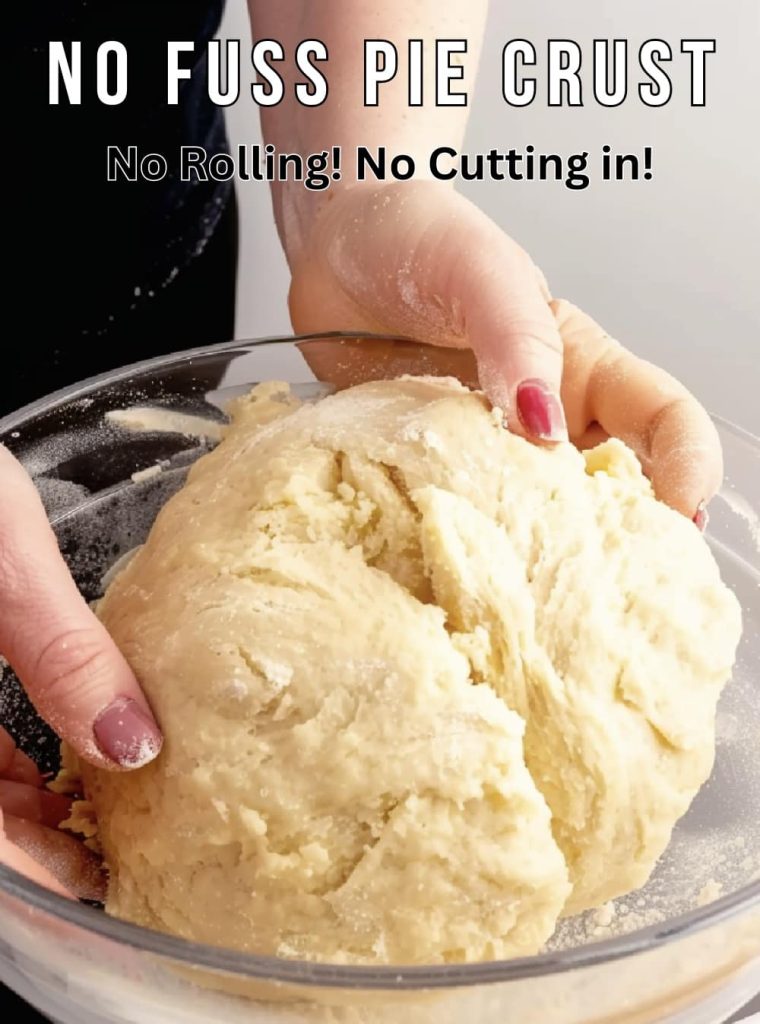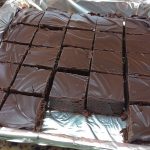Are you tired of wrestling with pie crust? Do you long for a foolproof method to achieve flaky and delicious pastries every time? Look no further! In this comprehensive guide, we will take you on a journey to mastering the art of a no-fuss pie crust. Whether you’re a seasoned baker or a baking newbie, this guide will equip you with the knowledge and techniques to create perfect pie crusts without any stress or hassle.
Our step-by-step instructions and expert tips will ensure that your pie crusts turn out light, tender, and wonderfully flaky. Say goodbye to soggy bottoms and tough crusts – with our foolproof guide, you’ll be able to impress your friends and family with professional-looking and delectable pies.
From choosing the right ingredients to mastering the perfect technique, we’ve got you covered. Join us as we delve into the secrets of creating mouthwatering pie crusts that will have everyone begging for seconds. Get ready to elevate your pie game to a whole new level with our foolproof guide to flaky and delicious pastries.
The Importance of a Good Pie Crust
A pie crust is more than just a vessel for your favorite fillings – it is the foundation of a delicious pie. A well-made crust can transform a simple dessert into a showstopper. It provides a delicate and flaky texture that perfectly complements the richness of the filling. A good pie crust should be tender, buttery, and have a slight crunch when you bite into it. It should enhance the flavors of the filling without overpowering it.
The crust is also the first thing that people see when they look at your pie. A beautifully crafted crust can make your dessert look more appetizing and professional. On the other hand, a poorly made crust can be unappealing and detract from the overall presentation of the pie. So, if you want to wow your guests with your baking skills, mastering the art of a good pie crust is essential.
Creating a good pie crust doesn’t have to be a daunting task. With the right techniques and a little practice, you can achieve a crust that is both delicious and visually pleasing. In the following sections, we will guide you through the process of making a perfect pie crust step by step, from choosing the right ingredients to troubleshooting common problems.
Understanding the Different Types of Pie Crusts
Pie crusts come in various forms, each with its own unique characteristics. Understanding the different types of pie crusts will help you choose the right one for your recipe and desired outcome. The two most common types of pie crusts are the traditional butter crust and the flaky crust.
The traditional butter crust is made with a combination of flour, butter, salt, and water. It is the classic choice for many pie recipes and provides a rich and buttery flavor. This crust is versatile and can be used for both sweet and savory pies. It is relatively easy to make and is a great option for beginners.
On the other hand, the flaky crust is lighter and more delicate. It is made by incorporating cold fat into the flour, creating layers that result in a flaky texture when baked. This crust is perfect for fruit pies and tarts where a light and airy texture is desired. It requires a bit more skill and practice to master, but the results are worth it.
Other types of crusts include graham cracker crusts, cookie crusts, and gluten-free crusts. These crusts are often used for specific recipes or dietary restrictions. Experimenting with different types of crusts can add variety and excitement to your baking repertoire.

Essential Ingredients for a Perfect Pie Crust
To create a perfect pie crust, it is crucial to use the right ingredients. Each ingredient plays a significant role in the taste and texture of the crust. Here are the essential ingredients you will need for No-Fuss Pie Crust:
- Flour: All-purpose flour is the most commonly used flour for pie crusts. It has the right balance of protein and starch, resulting in a tender and flaky crust. You can also use pastry flour or a combination of all-purpose and cake flour for a more delicate crust.
- Fat: The fat in the crust is what gives it its flakiness and flavor. Butter is the most popular choice due to its rich taste and creamy texture. Shortening can also be used for a more tender and flaky crust. Some recipes call for a combination of both butter and shortening to achieve the best of both worlds.
- Salt: A pinch of salt enhances the flavor of the crust and balances the sweetness of the filling. It is a small but crucial ingredient that should not be overlooked.
- Water or Liquid: Adding just the right amount of liquid is essential to bind the dough together. Ice water is commonly used as it helps keep the fat in the dough cold, resulting in a flakier crust. Some recipes call for other liquids such as vinegar or sour cream to add tenderness and flavor.
Step-by-step instructions for making a basic pie crust
Creating a basic pie crust is the foundation of mastering the art of no-fuss pastry. Follow these step-by-step instructions to achieve a perfect crust every time.
Step 1: Gather your ingredients
To make a basic pie crust, you will need the following ingredients:
- 2 1/2 cups all-purpose flour
- 1 teaspoon salt
- 1 cup unsalted butter, cold and cubed
- 1/4 to 1/2 cup ice water
Step 2: Combine the dry ingredients
In a large mixing bowl, whisk together the flour and salt until well combined. This will ensure that the salt is evenly distributed throughout the crust, adding flavor to every bite.
Step 3: Cut in the butter
Using a pastry cutter or your fingertips, cut the cold, cubed butter into the flour mixture until it resembles coarse crumbs. The key here is to work quickly and avoid overmixing, as the butter should remain cold to achieve a flaky texture.
Step 4: Add the ice water
Gradually drizzle the ice water over the flour-butter mixture, starting with 1/4 cup and adding more as needed. Gently mix the dough with a fork or your hands until it comes together. Be careful not to overmix, as this can result in a tough crust.
Step 5: Form the dough
Transfer the dough onto a lightly floured surface and gather it together, gently kneading it a few times to ensure it is well combined. Divide the dough in half and shape each portion into a disk. Wrap each disk tightly in plastic wrap and refrigerate for at least 1 hour before rolling out.
Step 6: Roll out the crust
Once chilled, remove one disk of dough from the refrigerator and let it sit at room temperature for a few minutes to soften slightly. On a lightly floured surface, roll out the dough into a circle about 12 inches in diameter, rotating it occasionally to prevent sticking. Carefully transfer the rolled-out crust to a pie dish and gently press it into the bottom and sides.
Step 7: Blind bake the crust (optional)
If your pie recipe calls for a pre-baked crust, you can blind bake it to ensure a crisp and flaky texture. To do this, preheat your oven to 425°F (220°C). Line the crust with parchment paper or aluminum foil and fill it with pie weights or dried beans to prevent it from puffing up. Bake for about 15 minutes, then remove the weights and continue baking for another 5-10 minutes until golden brown.
Step 8: Fill and bake
Once your crust is ready, you can fill it with your desired pie filling and bake according to your recipe’s instructions. Enjoy the anticipation as the delicious aroma of your pie fills your kitchen!
The Timeless Recipe: A No-Fuss Pie Crust
Ingredients:
- 2 cups all-purpose flour
- 1/2 cup oil (your choice, but canola or vegetable for neutrality)
- 3 tablespoons cold water
- 1/2 teaspoon salt
- 1/4 teaspoon baking powder
No-Fuss Pie Crust Instructions:
- Preparation: Start by greasing a 9-inch pie dish with nonstick spray.
- Mix Dry Ingredients: Whisk flour, salt, and baking powder in a large bowl.
- Add Liquids: Blend in oil and cold water, mixing until a dough forms.
- Shape the Crust: Press the dough into the pie dish, evenly covering the bottom and sides.
- Finalize: Crimp the edges or press with a fork, then bake as per your pie recipe.
Tips for achieving a flaky texture
A flaky pie crust is a thing of beauty, and with these tips, you can achieve that perfect texture every time.
Tip 1: Keep your ingredients cold
Cold ingredients are crucial to a flaky crust. Make sure your butter is cold and cubed, and use ice water when combining the dough. The cold temperature helps create steam when the pie bakes, resulting in those desirable layers of flakiness.
Tip 2: Don’t overmix
Overmixing the dough can lead to a tough crust. Mix the ingredients just until they come together, and avoid kneading the dough excessively. The goal is to distribute the butter evenly without overworking it.
Tip 3: Use a light touch
When rolling out the dough, use a light touch to prevent the butter from melting and the crust from becoming tough. Also, avoid stretching the dough when transferring it to the pie dish, as this can cause shrinkage during baking.
Tip 4: Chill the dough
Chilling the dough before rolling it out helps relax the gluten and solidify the butter, resulting in a flakier texture. It also makes the dough easier to work with and less likely to stick.
Tip 5: Ventilate the crust
To prevent a soggy bottom crust, consider ventilating it before adding the filling. This can be done by poking a few holes in the bottom of the crust with a fork or cutting decorative slits on the top crust. Ventilation allows steam to escape during baking, helping to keep the crust crisp.
While a classic pie crust is always a crowd-pleaser, experimenting with creative variations can take your pastries to new heights. Here are a few ideas to inspire your pie crust adventures:
1. Chocolate crust
Add a touch of indulgence to your pies by incorporating cocoa powder into the dough. Replace 1/4 cup of the flour with unsweetened cocoa powder for a rich and chocolatey crust that pairs beautifully with fruity fillings or creamy desserts.
2. Oatmeal crust
For a rustic and wholesome twist, consider adding oats to your pie crust. Replace 1/2 cup of the flour with rolled oats and proceed with the recipe as usual. The oats add texture and a nutty flavor that complements fruit pies or spiced fillings.
3. Almond crust
Elevate your pies with the delicate flavor of almonds. Replace 1/2 cup of the flour with almond flour and proceed with the recipe as usual. The almond flour adds a subtle nuttiness and pairs wonderfully with berry or stone fruit fillings.
4. Gingersnap crust
For a festive twist, swap out the traditional pie crust for a gingersnap cookie crust. Crush gingersnap cookies and combine them with melted butter to create a flavorful and spiced crust that is perfect for pumpkin or creamy cheesecake pies.
5. Savory herb crust
Not all pies need to be sweet! Experiment with a savory herb crust for your quiches or meat pies. Add dried herbs such as thyme, rosemary, or sage to the dough to infuse it with a savory aroma and enhance the flavors of your savory fillings.
Troubleshooting common pie crust problems
Even with the best intentions, pie crusts can sometimes present challenges. Here are some common problems you may encounter and how to troubleshoot them:
Problem 1: Shrinkage
If your crust shrinks during baking, it may be due to overworking the dough or not chilling it adequately. To prevent shrinkage, make sure to handle the dough gently and refrigerate it for the recommended time before rolling it out. Additionally, avoid stretching the dough when transferring it to the pie dish.
Problem 2: Soggy bottom crust
A soggy bottom crust can be caused by excessive moisture from the filling. To prevent this, consider venting the bottom crust before adding the filling, as mentioned earlier. You can also brush the bottom crust with a beaten egg or sprinkle it with breadcrumbs before adding the filling to create a barrier that helps absorb excess moisture.
Problem 3: Tough crust
A tough crust is often the result of overmixing or overworking the dough. Remember to mix the ingredients just until they come together, and avoid kneading the dough excessively. Using a light touch when rolling out the dough can also help prevent toughness.
Problem 4: Uneven browning
If your pie crust is browning unevenly, it may be due to hot spots in your oven. To ensure even browning, you can rotate the pie dish halfway through baking or shield the edges of the crust with aluminum foil if they are browning too quickly.
Problem 5: Crust sticking to the pan
If your crust sticks to the pan, it can be frustrating to remove and can ruin the appearance of your pie. To prevent sticking, make sure to grease your pie dish thoroughly before adding the crust. You can also line the bottom of the dish with parchment paper to make it easier to remove the pie once it has cooled.
Delicious pie filling ideas to pair with your crust
Now that you have mastered the art of a no-fuss pie crust, it’s time to explore some delicious filling ideas to complete your pie. Here are a few suggestions to inspire your culinary creativity:
1. Classic apple pie
Nothing beats the classic combination of sweet and tart apples baked inside a flaky pie crust. Add a touch of warmth with cinnamon and nutmeg, and don’t forget a scoop of vanilla ice cream on top for the perfect finishing touch.
2. Lemon meringue pie
For a tangy and refreshing treat, try a lemon meringue pie. The zesty lemon filling pairs beautifully with the sweet, fluffy meringue, creating a delightful balance of flavors and textures.
3. Pecan pie
Indulge in the rich and nutty goodness of a pecan pie. The caramel-like filling studded with pecans is a decadent treat that is sure to satisfy any sweet tooth.
4. Quiche Lorraine
For a savory option, whip up a classic Quiche Lorraine. The combination of bacon, cheese, and eggs nestled in a buttery crust makes for a satisfying and versatile dish that can be enjoyed for brunch, lunch, or dinner.
5. Berry pie
Take advantage of seasonal berries by making a vibrant and fruity pie. Whether it’s a mixed berry pie or a single berry variation, the burst of flavors encased in a flaky crust is a delightful way to showcase the natural sweetness of fresh berries.
Conclusion: Enjoying the fruits of your labor
Congratulations! You have successfully mastered the art of a no-fuss pie crust. With our step-by-step instructions, expert tips, and creative twists, you are well-equipped to create flaky and delicious pastries that will impress everyone who takes a bite.
Remember to keep your ingredients cold, use a light touch, and give the dough ample time to chill. Don’t be afraid to experiment with different flavors and fillings, and don’t worry if you encounter any challenges along the way. With practice, you will continue to improve and develop your own signature pie crust.
So go ahead, grab your rolling pin, and let your creativity soar. Whether it’s a sweet treat or a savory delight, your homemade pies will be a testament to your newfound mastery of the art of no-fuss pie crust. Enjoy the fruits of your labor and indulge in the joy of sharing your delicious creations with loved ones. Happy baking!
Don’t forget to pin this no-fuss pie crust recipe! It’s a game-changer for quick and delicious homemade pies. Pin now, bake later!

